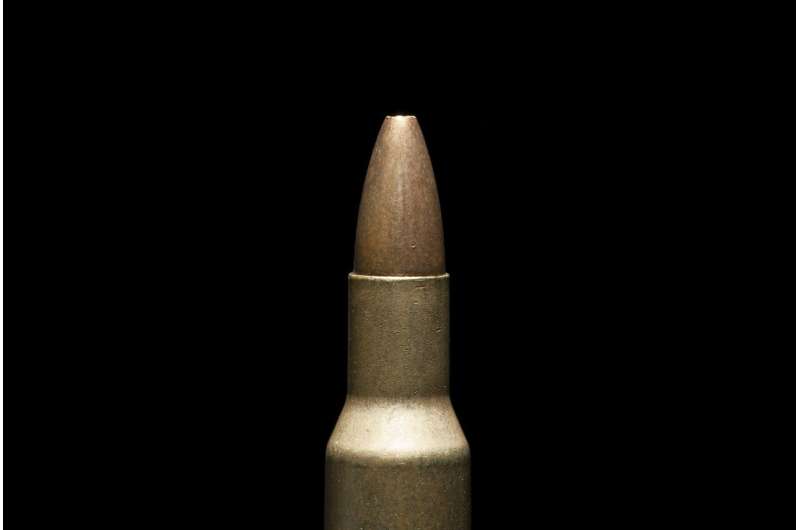This article has been reviewed according to Science X's editorial process and policies. Editors have highlighted the following attributes while ensuring the content's credibility:
fact-checked
trusted source
proofread
Why unexploded ordnances pose physical, and environmental, risks

Two unexploded ordnance were fished out of the Charles River in Needham, Massachusetts, this week.
A sweep of the river by the state police bomb squad and a marine dive team didn't turn up any more munitions.
Beyond the obvious safety risks, the old weapons and ammunition left underwater also present environmental risks, a Northeastern University expert says.
And they used to be put there intentionally.
"Until the 1970s, we were using the ocean to dump things," says Loretta Fernandez, associate professor of Civil and Environmental Engineering and Marine and Environmental Sciences at Northeastern. "We weren't really thinking about how the compounds in these munitions might get out and start to mix into the water."
Fernandez says while there is only limited and inconclusive data on the environmental effects of munitions, we know that they contain heavy metals such as lead, mercury and uranium.
"The metals themselves we know are toxic," says Fernandez, who develops tools to measure chemicals from munitions in the environment.
Unexploded ordnances or munitions wash up on beaches, get picked up in fishing nets, and even bring the bomb squad out to the Charles River—a legacy of warfare, dumping and accidents.
"They're out there," Fernandez says. "It's sort of like strolling down the beach and you see a piece of purple sea glass. It's not everywhere, but you're going to find it."
In fact, Fernandez says officials estimate that tens of thousands to hundreds of thousands of tons of munitions have been disposed of in coastal waters; and that does not count the munitions that have been dumped in the deep ocean.
Munitions that have been purposefully dumped—called disposed military munitions—are defused, meaning they can not explode, Fernandez explains. But unexploded munitions that may have been launched at an enemy or on a range or a test site—or munitions that may have fallen off a boat or sunk in a shipwreck—can pose a tremendous safety risk.
There are also risks from remnants of exploded munitions—lead ammunition, for example.
Regardless of how they got there, however, munitions also present a problem as they degrade. First, many of the munitions have steel casing that contains lead and mercury. As that leaches out and degrades, the chemicals inside are exposed.
Fernandez says these can include everything from Trinitrotoluene (commonly known as TNT) to mustard gas, to World War II-era explosives like RDX and HMX, to uranium and "insensitive munitions" that are more contemporary.
These then can make their way into groundwater, ocean water and soil sediment.
Or, as fishers have found out, you can haul up a jelly-like ball of mustard gas and get gassed as it warms in the air, requiring the Coast Guard and other officials to come and decontaminate your boat.
Finally, there is the possibility that not only the chemicals in the munitions themselves may be harmful, but that the compounds they produce as they break down may prove toxic.
These potential environmental harms also present a dilemma for disposing of the ordinances—something typically done through controlled, low-energy explosions.
"It has a smaller shockwave, and I'm sure if I were a seal or a whale or a fish, I'd appreciate that," Fernandez says. "But what it does is it spreads out the munitions constituents. … Now you have the constituents seeping into the water from a larger area."
So, if you should come across munitions?
"Definitely stay away," Fernandez says.
Provided by Northeastern University
This story is republished courtesy of Northeastern Global News news.northeastern.edu.




















